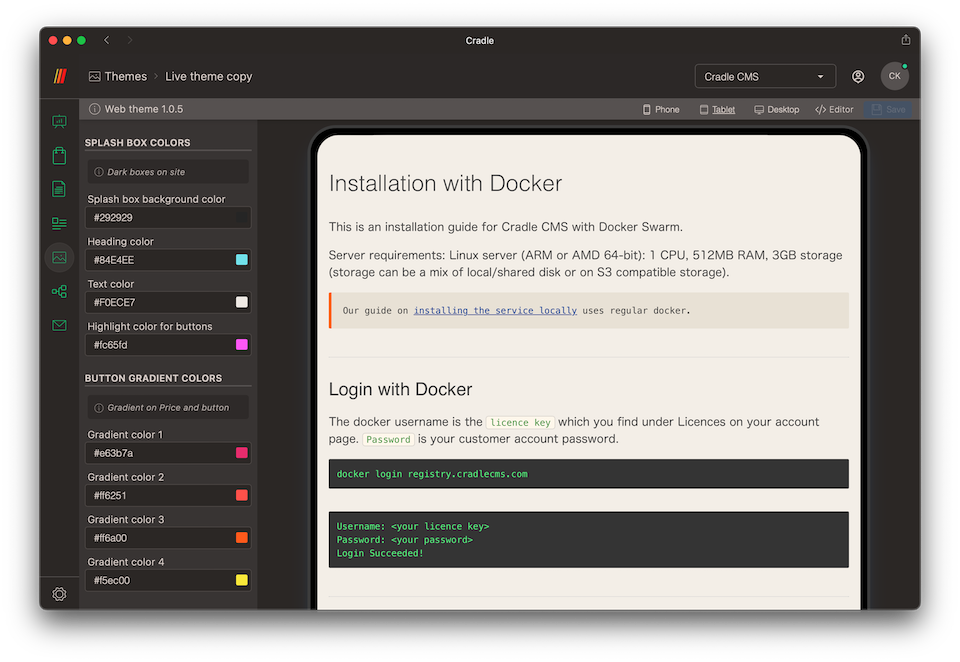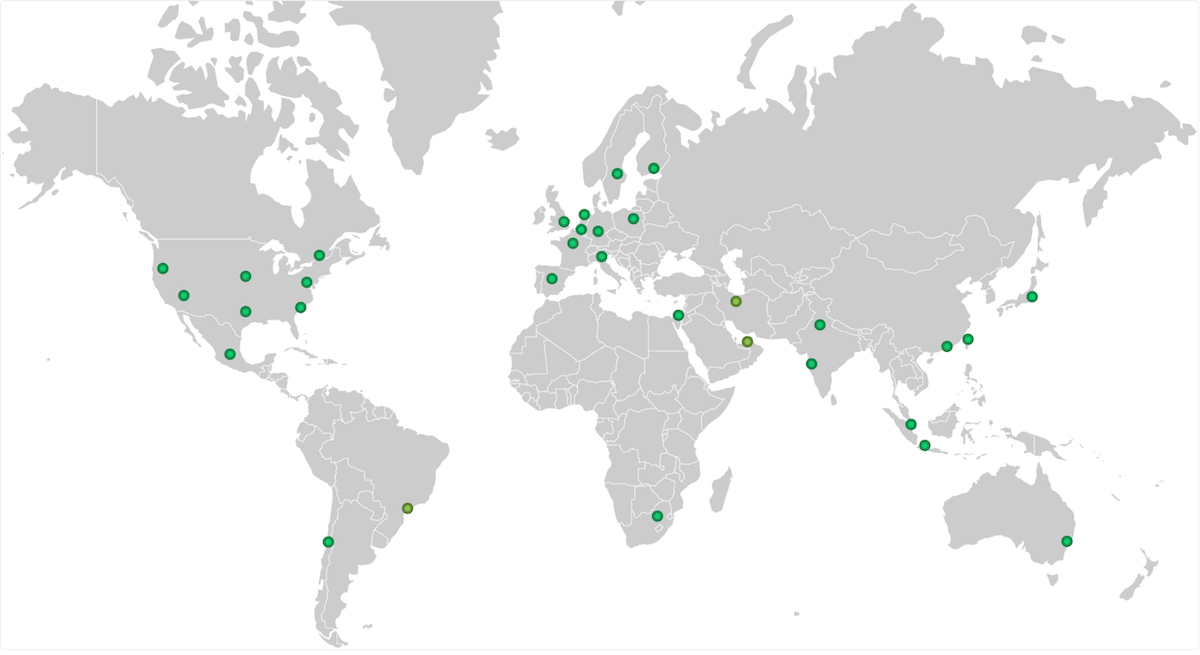CradleCMS is an easy to setup and reliable web publishing platform & eCommerce solution where you can create blogs, company websites and eCommerce stores in an fast admin UI. You can install it on-premises or in the cloud, run the whole system on a single server or split into multiple servers.

10x performance
- makes it easy to produce quality websites
Go is known for its fast execution speed which makes it ideal for building web platforms, where every millisecond counts. Our benchmark tests shows that our application handles 10 x more requests than php- and js-code stacks. This speed is partly due to Go's unique concurrency features, allowing efficient use of system resources.
Server requirements for sites with 1 million monthly visitors are as low as 1 CPU, 512MB RAM, 1 GB Storage.

Scalability
Go's built-in support for concurrency and its lightweight, efficient runtime environment make it well-suited to build distributed systems. With Cradle it's combined with a service oriented design deployable in multiple ways, support for S3 and CockroachDB.
The architecture of the software enables physical separation of services and both horisontal (scale out) and vertical (scale up) scaling is possible.

A flexible infrastructure, adaptable to your business. Whether you're running on a single server or need to an anycast deployment, Cradle's architecture can adapt to your requirements, from small installations to enterprise-level deployments.
About Go
Go is syntactically similar to programming language C, which should be no coincidence as one of the creators also is designer and creator of C released in 1972. Together with fellow engineers, they aimed to build a new coding language that includes improvements and adaptations to the modern computer landscape and the work environment for the engineer. They first released it in 2008 as Go and the language now starts to approach 20 years of age.
When we started to write Cradle systems suit in 2022 the obvious choice was Go as main programming language, Go is a relatively simple language with a clean syntax and minimalistic at its core with a large and active community.
Go was born out of frustration with existing languages and environments for the work we were doing at Google. Programming had become too difficult and the choice of languages was partly to blame. One had to choose either efficient compilation, efficient execution, or ease of programming; all three were not available in the same mainstream language. Programmers who could were choosing ease over safety and efficiency by moving to dynamically typed languages such as Python and JavaScript rather than C++ or, to a lesser extent, Java
